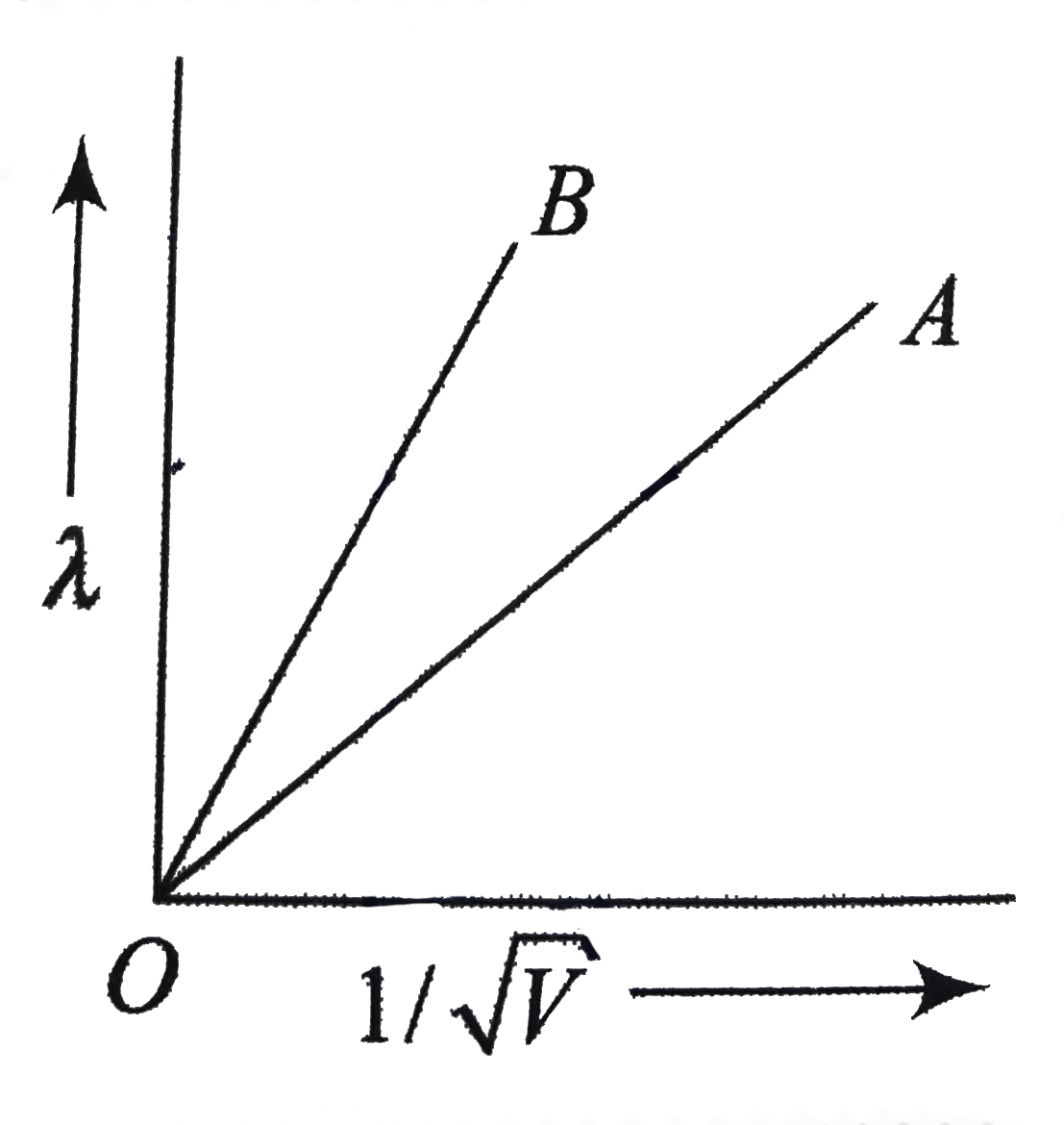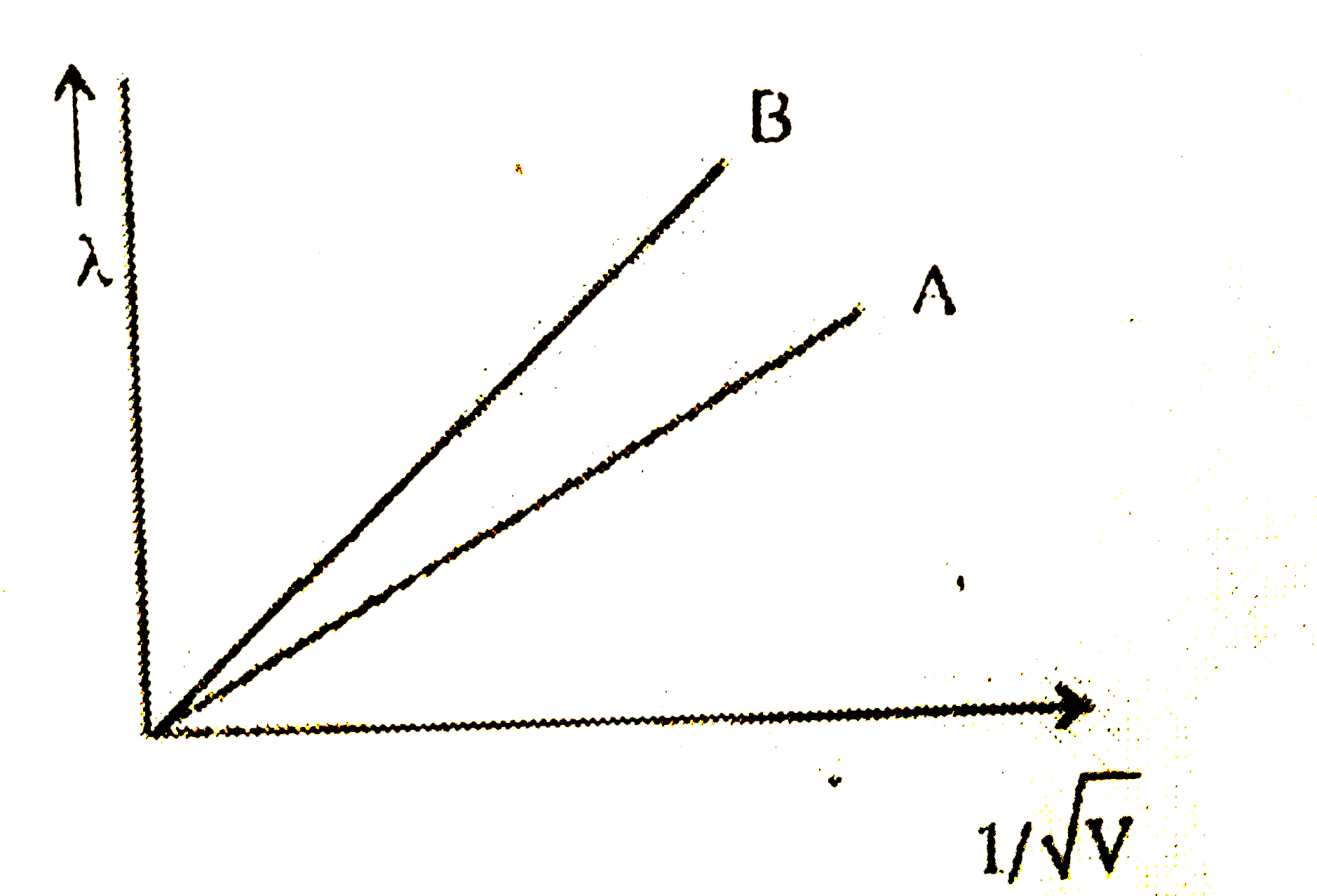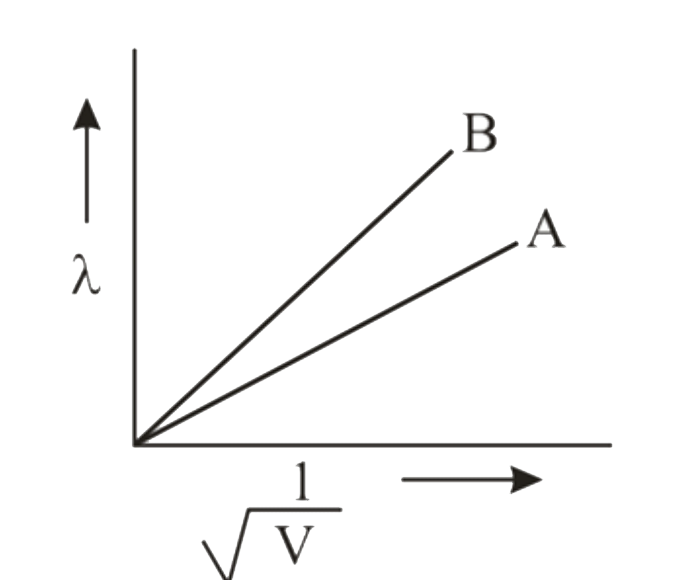
The two lines A and B in fig. shows the plot of de- Broglie wavelength (λ) as a function of 1√V(V is the accelerating potential) for the particles having the same charge. Which of the two represents the particle of heavier mass?
In terms of accelerating potential V, the de Broglie wavelength of a charged particle is given by
λ=h√2meV …(i)
Where e is charge and m is mass of the particle. Equation (i) represents a straight line, whose slope is h√2me. The slope of the line is inversely proportional to √m. since the slope of line A is lesser, it represents the particle of heavier mass
Topper's Solved these Questions
- PHOTOELECTRIC EFFECTBOOK - CENGAGE PHYSICS ENGLISHCHAPTER - PHOTOELECTRIC EFFECTEXERCISE - Exercise 3.2
8 Videos
- PHOTOELECTRIC EFFECTBOOK - CENGAGE PHYSICS ENGLISHCHAPTER - PHOTOELECTRIC EFFECTEXERCISE - Subjective
16 Videos
- PHOTOELECTRIC EFFECTBOOK - CENGAGE PHYSICS ENGLISHCHAPTER - PHOTOELECTRIC EFFECTEXERCISE - Examples
8 Videos
- NUCLEAR PHYSICSBOOK - CENGAGE PHYSICS ENGLISHCHAPTER - NUCLEAR PHYSICSEXERCISE - ddp.5.5
14 Videos
- RAY OPTICSBOOK - CENGAGE PHYSICS ENGLISHCHAPTER - RAY OPTICSEXERCISE - DPP 1.6
12 Videos
Similar Questions
Two lines, A and B, in the plot given below show the variation of de-Broglie wavelength, λ versus 1/√V, where V is the accelerating potential difference, for two particles carrying the same charge. Which one of two represents a particle of smaller mass?

View SolutionPlot a graph showing variation of de-broglie wavelength λ versus 1/√V, where V is accelerating potential for two particle A and P carrying same charge but of masses m1andm2(m1>m2). Which one of the two represents a particle of smaller mass and why?
View Solution
Knowledge Check
Which of these particles having the same kinetic energy has the largest de Broglie wavelength ?
AElectronBAlpha particleCProtonDNeutronThe de Broglie wavelength λ of an electron accelerated through a potential V in volts is
A1.227√VnmB0.1227√VnmC0.01227√VnmD12.27√Vnm
de Broglie wavelengths of two particles A and B are plotted against (1√V) , where V is the potential on the particles. Which of the following relation is correct about the mass of the particles ?

View SolutionFind the ratio of de Broglie wavelength of an α -particle and a deutron if they are accelerating through the same potential difference
View SolutionFor particles having same K.E., the de-Broglie wavelength is
View SolutionDraw a graph showing the variation of de Broglie wavelength of a particle of charge q and mass m with accelerating potential. Proton and deuteron have the same de Broglie wavelengths. Explain which has more kinetic energy.
View SolutionPlot a graph showing variation of a de Broglie wavelength (λ) associated with a charged particle of mass m, verses 1/√V, where V is the potential difference thrugh which the particle is accelerated.
View SolutionFind the ratio of de Broglie wavelength of a proton and as α-particle which have been accelerated through same potential difference.
View Solution
